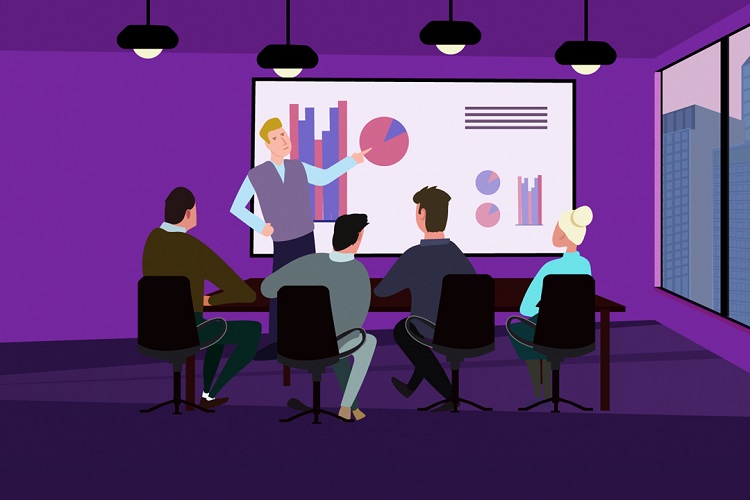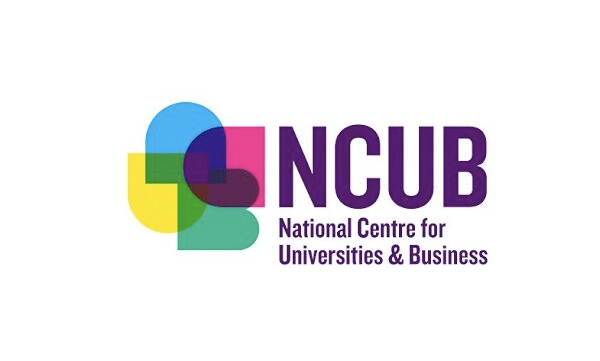UK officer workers have admitted it takes them less than six minutes to drift off during a PowerPoint presentation and some 58% claimed to have almost fallen asleep during one in the last year.
The new One Poll research of 2,000 office workers commissioned by presentations experts, Future Present, revealed that 22% are drifting less than six minutes in and by the 10 minute mark, 48% were thinking about more exciting things like food (53%), boxsets (36%), relationships (38%) and sex (31%) – quite often when many businesses are still covering their own company background and not what they can do for them!
It sounds like bad news for Microsoft’s most widely used presentation software, which claims to have 1.2 billion users worldwide, and it’s little wonder that the phrase, “Death by PowerPoint” has become lexicon in the modern day workplace.
 Lyndon Nicholson, CEO of Future Present – an agency that works on thousands of PowerPoint slides a year including investment decks, sales pitches and TED Talks;
Lyndon Nicholson, CEO of Future Present – an agency that works on thousands of PowerPoint slides a year including investment decks, sales pitches and TED Talks;
“With the advent of smartphones, the human attention is getting shorter and shorter. Our research showed that astonishingly almost a quarter of your audience has already disengaged within six minutes of your PowerPoint slide show starting. If your presentation is a pitch to win work or funding; this means you’ve probably only just covered the background before you’ve lost your client or investor’s attention. The key is keeping people invested and that means creating real audience engagement.”
Future Presents recently added Susie Phillips-Baker, an organisational psychologist to the team, who said:
“By following some simple cognitive communications principles it’s easy to enhance the effectiveness of your presentations and play to the strengths of human information processing abilities. Taking in lots of visual and auditory information can place high demands on the working memory, so by reducing the processing demands on the audience, you can essentially avoid the mind wandering or switching off.”
Future Present has worked with Susie Phillips-Baker to compile their top ten tips on how to improve the success of your next presentation:
- It’s not about you..
Most PowerPoint presentations start with background slides from the organisation presenting. Believe it or not, your audience is not interested in hearing about you. Given that the first 5 minutes are the most crucial, cut straight to demonstrating you understand them and their issues and discuss how you can help – then include your bio in your appendix. If they want to talk about you, it’s there to refer to later. - Less is more
Reduce cognitive demand by avoiding cramming lots onto slides and give yourself enough time to go through them. Your audience needs time to process information. Likewise, too many slides being flicked through quickly increases the cognitive load for the audience so they will more quickly lose attention. - Audience participation
Audience engagement is all about the magic 5 minutes. Never speak for more than 5 minutes without getting them to talk back to you or ask them a question to encourage participation. It checks that they’re listening and stops them drifting off. It also allows the audience to switch between active and passive activities which keeps them engaged. - What’s on the menu?
Think about menu creation, asking your audience what they want to talk about and having colour-coded option slides prepared that you can jump to. This means you can adapt the presentation on the fly – meaning you’re prepared for any question or eventuality. Clearly signposting sections also ensures they get the right amount of information, and that their cognitive expectations are being met which reduces cognitive load and will put you as the presenter in good favour. - A few little words
It may seem like an obvious one, but avoid slides with lots of text. Two to three words per slide are optimal. Images are key as 90% of information transmitted to the brain is visual, but avoid naff clipart at all costs. Remember that images should assist in a metaphorical sense to set the tone for what the audience is hearing and to help the presentation flow; they don’t necessarily have to have a literal connection, but make it relevant or their minds will wander on to what that odd image in the corner is and they’ll stop listening! - Moving images
Microsoft have been innovating with PowerPoint over the past few years and some of the tools and features are now unparalleled. Where appropriate use the clever animation tools now included in the software to slide your message across the screen point by point and tell the story in clear chunks. Our attention is drawn to what is different, so moving images work well for helping the audience to process information effectively. - Tell me a story
People take in information better when the narration is informal and conversation, rather than formal. Storytelling can also be very effective in presentations as it engages the audience on a more personal level. You can assist your audience in creating a narrative by clearly defining the topic and presenting a road map which tells them what’s coming and how they are going to get there. - Silence is golden.
Silence doesn’t need to be uncomfortable. In fact it can be a very useful tool if used well. A presenter should take the time to gather their thoughts if needed which in turn, provides their audience with much needed breathing space to absorb and reflect. - B for black
One of PowerPoint’s secret weapons is the ‘b key’ on your keyboard. There are times when you want the audience’s attention just on you. Hitting ‘b’ will turn your screen black. This again reduces the high demands from visual and auditory information and signals a change which maintains attention. Plus with nothing else to look at, your audience can’t help but focus on you.








